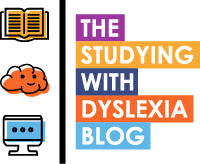How do you explain Dysgraphia to a child. More to the point, what about us parents? In this article I review ‘Alli Can’t Write’ a wonderful book that seeks to help children understand Dysgraphia and gives resources that help parents and teachers.
At Primary School there is such an emphasis (and rightly so ) on developing handwriting skills, but so often when a child struggles with their handwriting there is a temptation to dwell on the problem and not the causation. To be fair, the condition ‘Dysgraphia’ is a little known condition that affects one’s ability to write and sequence words and can be co-occurring with dyslexia and other related conditions.
Maria Chivers, an international author on dyslexia and other learning difficulties, is passionate about raising awareness of Specific Learning Difficulties (SpLD’s) and is the founder of the Swindon Dyslexia Centre and more recently shares resources via Dyslexia A2Z.
As a way of raising awareness about Dysgraphia she wrote ‘Alli Can’t Write’.
How does Maria define Dysgraphia?
“Dysgraphia mean having severe problems with handwriting, which is associated with fine-motor skillsand/or problems with speed of processing - in spite of having normal intellectual ability.”
Reviewing ‘Alli Can’t Write’.
Maria sent me a copy of her book and I set to work on reading it.
The book itself was written by Maria but it also contains some beautiful illustrations by Janet Payne.
The book tells the story of young Alli, an alligator who goes to school with his animal friends who are all from the Florida Everglades, but who struggles with writing as well as his friends. In fact, his written work is very messy and is illegible.
Click here for more information
The book talks about what his friends say about him and how he feels about not being able to write well despite being intellectual in the way that he articulates his ideas. Eventually the teacher talks with Alli’s parents which results in Alli visiting a psychologist who does an assessment and diagnoses Dysgraphia.
The story has a happy ending (which I won’t spoil for you) but it illustrates how important understanding and intervention is in helping a child who is experiencing Dysgraphia.
At the end of the book, Maria helpfully includes resources for parents and teachers that they can use to support a child with Dysgraphia.
I found the book an enjoyable read and one that I think children would enjoy having read to them.
The setting is in the US Florida Everglades and there is a co-occurring theme related to ecology and some of the environmental issues related to some of the animals in the book.
This is a lovely book that does an admirable job of explaining what Dysgraphia is but I felt that the ecological theme tended to compete with the main theme, but that is my own subjective response to the book.
The narrative and the illustrations are captivating and any parent or teacher who knows a child who is finding handwriting difficult will find this book useful.
If you would like to get a copy for yourself then you can at Amazon.
Are you a parent of a child with dyslexia?
I have developed a way for you to reflect on how far you have come in getting support for your child and to identify the next steps that you can take confidently so as to unlock the potential of your child.
Find out more by clicking the link below:




